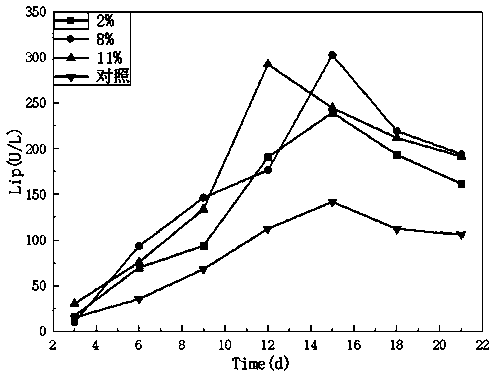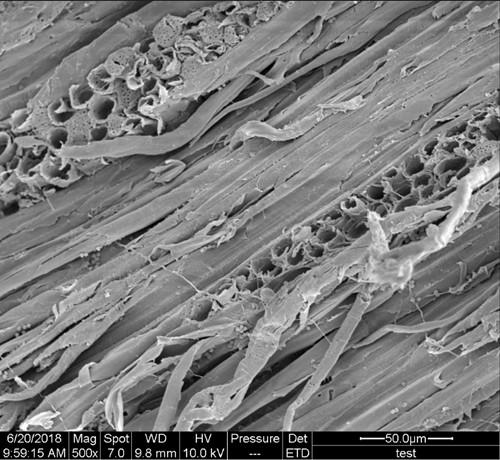Pretreatment method for improving biodegradation effect of Chinese locust
A biodegradation and pretreatment technology, which is applied in recycling technology, plastic recycling, etc., can solve the problems of secondary environmental pollution, high processing cost of by-products, etc., and achieve the effect of increasing the contact area and improving the biodegradation effect
- Summary
- Abstract
- Description
- Claims
- Application Information
AI Technical Summary
Problems solved by technology
Method used
Image
Examples
specific Embodiment approach 1
[0026] Embodiment 1: The pretreatment method for improving the biodegradation effect of locust in this embodiment includes the following steps:
[0027] 1. Grinding treatment:
[0028] Remove the impurities in the locust wood, physically grind the locust wood, and sieve to obtain a particle size of 20 mesh locust wood chips;
[0029] 2. Inorganic salt pretreatment:
[0030] Add an inorganic salt solution to the locust wood chips treated in step 1, and treat at 55 to 65 ° C for 46 to 50 hours; the inorganic salt is FeCl with a mass concentration of 9% to 13% 2 solution; wherein the solid-liquid ratio of locust wood chips and inorganic salt solution is 1:(9~11)g / mL;
[0031] 3. Then filter off the inorganic salt solution, wash the residue with distilled water until the pH value no longer changes, after suction filtration, adjust the pH value to 6 to 7, and dry at 55 to 65 ° C to constant weight, that is, complete.
[0032] After physically grinding the locust wood to 20 meshe...
specific Embodiment approach 2
[0033] Embodiment 2: The difference between this embodiment and Embodiment 1 is that in step 2, the treatment is performed at 60° C. for 47 to 49 hours. Others are the same as the first embodiment.
specific Embodiment approach 3
[0034] Embodiment 3: The difference between this embodiment and Embodiment 1 or 2 is that the inorganic salt solution described in Step 2 is FeCl with a mass concentration of 9% to 13% 2 solution. Others are the same as in the first or second embodiment.
PUM
| Property | Measurement | Unit |
|---|---|---|
| Particle size | aaaaa | aaaaa |
| Concentration | aaaaa | aaaaa |
Abstract
Description
Claims
Application Information
 Login to View More
Login to View More - R&D
- Intellectual Property
- Life Sciences
- Materials
- Tech Scout
- Unparalleled Data Quality
- Higher Quality Content
- 60% Fewer Hallucinations
Browse by: Latest US Patents, China's latest patents, Technical Efficacy Thesaurus, Application Domain, Technology Topic, Popular Technical Reports.
© 2025 PatSnap. All rights reserved.Legal|Privacy policy|Modern Slavery Act Transparency Statement|Sitemap|About US| Contact US: help@patsnap.com



